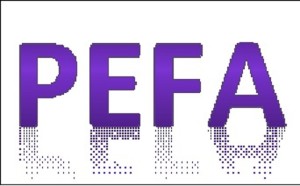
Posted by David Fellows and John Leonardo1
The problem
Failings in public financial management span the breadth of the Public Expenditure Financial Accountability (PEFA) scores. Our work suggests that numerous African governments that had very low scores from initial PEFA assessments2 conducted up to nine years ago for some Performance Indicators (PIs) still present low or failing scores – ‘C’, ‘D+’ or even ‘D’ – for many of the same PIs in the most recent assessments.
PEFA assessments and PEFA-based reforms do not seem to be working for all PIs. Why? There are two main problems.
First, the current PEFA methodology results in assessments often giving little attention to some of the broader institutional causes of poor performance, including:
- Staff capability: The selection, availability, training, ambition and management of staff are typically ignored. Even when they are considered, boundaries are often too narrowly drawn around central finance functions.
- Finance professionalism: PEFA assessments do not consider the capacity to adapt PFM practice to local characteristics and pressures, to share knowledge and promote essential values.
- Management: PEFA assessments rarely question the fitness of the management chain to carry the burden of the finance function and its reform or the commitment of top management and ministers to facilitating this task.
- ICT capacity: This is increasingly important – affecting both the ability to operate current processes and an organisation’s improvement potential – but completely overlooked.
- Extraneous policy effects: requires discipline to avoid concurrent policy changes that will pose unsustainable demands on top of the combined burden of PFM reform activities and the daily routine.
- The behaviour of politicians and top officials: In what is the most glaring limitation, corruption at a senior level, capricious decision-taking, unreasonable favouritism and lack of apparent consideration for staff or citizens can have disastrous implications, but features nowhere in the PEFA.
Such omissions can result in PFM reform programs failing to address fundamental problems.
Second, there is a disconnect between analysis and reform, with the two stages often developed by different groups, and reforms often having little relation to key underlying problems.
The very mixed history of PFM reform is a testament to these two problems.
An unacceptable state of affairs
Poor PFM performance is not unique to an African environment or developing nations in general or indeed to developed nations throughout the world. The problem for developing nations is that they are by their very definition less richly resourced. The administrative basis from which they play out their current experience is lower and the safetynets are less robust. They can less readily afford their mistakes and recover from them less rapidly.
The questions that we pose from our analysis are these: (i) is it reasonable to continue to do such a limited evaluation of the overall PFM environment given the evident complexity of the PFM context as we have set out in very brief terms in this note; (ii) given that the PEFA methodology has been in operation for almost ten years and numerous major countries are making relatively little progress with some key PFM functions, is the PEFA methodology and its underlying scope entirely satisfactory; (iii) are not assessments being underutilised in that their scope and the circulation of completed work is often restricted to finance ministries – even where activities outside the central finance function are subject to review there is often limited involvement of staff from such areas in assessment planning, task team membership and post hoc discussion; and (iv) is the best use being made of the insights gained by review teams given that there is no assured linkage between the assessment study and any consequent reform proposals?
A way forward
We believe that at least for those governments in serious difficulty the scope of the PEFA methodology is too narrow and that there must be a more wide-ranging diagnostic review at the PEFA assessment stage that helps concentrate minds on the root causes of serious PFM shortcomings.
It is not uncommon for governments to express doubt about the failings identified in PEFA assessments and reaffirm the validity of plans already made for the future that do not address fundamental problems. Such conclusions are more easily reached when causation is not addressed.
The current PEFA methodology requires the preparation of concept notes to inform decisions concerning the scope of proposed PEFA assessments. We suggest that the merits of undertaking a broader institutional assessment should represent an additional topic to be addressed in the preparation of future concept notes. If evidence of widespread poor performance emerges unexpectedly during an assessment, then the possibility of undertaking a wider institutional review should be considered at that stage.
Whilst it is accepted that political economy factors will have a material influence on PFM outcomes in many countries, that is no reason to ignore them.
Proposals
Once the PEFA diagnosis is complete, and the underlying performance factors laid bare, the same reviewers should be asked to present views on reform priorities, time scales and the reasons for previous reform failures. This work differs from the main assessment process and should therefore be included in an accompanying memorandum.
An extended review process – under which the traditional assessment and an examination of underlying factors are both examined, and reform priorities discussed – would make much better use of the assessment experience as a whole. Such an approach would be more conducive to strong, informed advocacy for prompt and effective decision-taking.
We also believe that assessment reports should be more widely circulated and that a wider group of staff involved in key PFM work activities should be consulted during the assessment process.
Conclusion
The proposed broader-based and extended PEFA assessment methodology falls far short of creating a design tool for PFM reform. It does, however, make better use of the effort and expertise employed and the collaborative environment established during the assessment process. Consequent reform strategies should, therefore, become more effective.
Notes:
[1] The authors are Principals of PFMConnect. They have been engaged on projects in Africa, Asia and the Pacific funded by the World Bank, EU, ADB and DfID, including PEFA assessments. They are grateful to Rajiv Sondhi, Head Loans and Grants at the International Fund for Agricultural Development, who reviewed the draft and offered helpful guidance; nevertheless views expressed remain the responsibility of the authors.
2 See: www.pefa.org
3 A slightly abbreviated version of this blog is available at the Devpolicy Blog from the Development Policy Centre based at the Australian National University’s Crawford School of Public Policy: Proposals for PEFA reform


